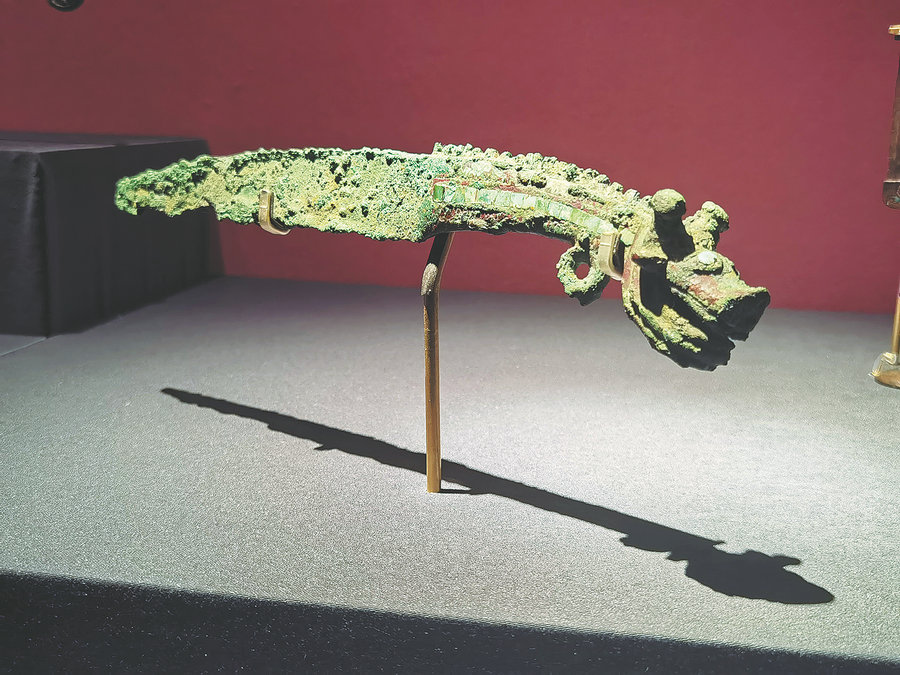

Though smaller in size and rougher in appearance, one of the bronze daggers on display may prove equally amazing. Carved in the shape of dragon head with a pair of turquoise eyes, the Shang Dynasty (c. 16th century-11th century BC) dagger, which displays typical elements from both China and West Asia, hints at the kind of cultural exchanges that occurred across the Eurasian grasslands before recorded history.
Just as bronze, which originated in West Asia and once enriched the genes of ancient Chinese civilization, silk from China may also have shaped the path of development on the other side of the continent, as it once inspired caravans to endure the tough desert crossing in search of wealth.
An ivory sculpture of a silkworm, unearthed from the 5,300-year-old Shuanghuaishu site in Henan province, tells the early chapters of the silk legend, while other exhibits explain its sequel.
"Chinese silk continued to spread westward, but Chinese artisans also absorbed elements of textiles from West and Central Asia and used them to improve their own patterns and techniques," Ji says. "The communication was in two directions."
A group of textiles unearthed in the present-day Xinjiang Uygur autonomous region were chosen to directly reflect this mix.
"Ancient artisans in West Asia may not have known silk weaving techniques, but their skill at weaving wool was introduced to China and adopted to make silk pieces," the curator explains.
In the Tang Dynasty (618-907), Chinese silk borrowed patterns then popular in West Asian textiles, which had a lasting influence on the later development of the silk industry.